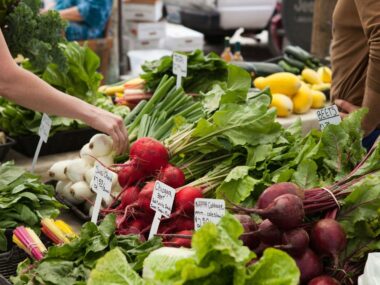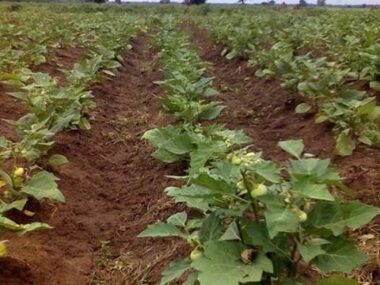Cover crops, also known as green manure or living mulch, are a vital component of sustainable agriculture with profound effects on soil health, fertility, and erosion prevention. By planting cover crops during fallow periods or intercropping them with cash crops, farmers can harness the power of nature to improve soil structure, increase organic matter, suppress weeds, and reduce erosion. As the world faces mounting challenges such as climate change and soil degradation, the adoption of cover cropping practices is becoming increasingly important for building resilient and sustainable food systems.

At its essence, cover cropping involves planting non-commercial crops primarily for the purpose of soil improvement rather than harvesting. These crops, which can include grasses, legumes, and brassicas, are selected for their ability to add organic matter to the soil, fix nitrogen, scavenge nutrients, and provide habitat for beneficial microorganisms. When incorporated into agricultural rotations or planted as living mulch between cash crops, cover crops offer a multitude of benefits for soil health and ecosystem functioning.
One of the primary benefits of cover crops is their ability to enhance soil fertility and structure. Through photosynthesis, cover crops capture carbon dioxide from the atmosphere and convert it into organic matter, which becomes incorporated into the soil upon decomposition. This process, known as carbon sequestration, not only helps mitigate climate change by reducing greenhouse gas emissions but also improves soil structure, water retention, and nutrient cycling. The roots of cover crops penetrate deep into the soil, breaking up compacted layers and improving aeration and drainage, which are essential for healthy root development and nutrient uptake by cash crops.
Furthermore, certain cover crops, particularly legumes such as clover, vetch, and peas, have the unique ability to fix atmospheric nitrogen through a symbiotic relationship with nitrogen-fixing bacteria in their root nodules. By harnessing atmospheric nitrogen and converting it into a plant-available form, these leguminous cover crops act as natural fertilizers, reducing the need for synthetic nitrogen fertilizers and enhancing soil fertility over time. This nitrogen-fixing ability not only benefits the cover crop itself but also provides a nitrogen source for subsequent cash crops in the rotation, contributing to higher yields and reduced input costs for farmers.
In addition to improving soil fertility, cover crops play a crucial role in weed suppression and erosion prevention. The dense foliage and vigorous root systems of cover crops compete with weeds for sunlight, water, and nutrients, reducing weed growth and seed germination. By covering the soil surface and shading out weeds, cover crops help to minimize weed pressure and reduce the need for herbicides, promoting a more ecologically balanced and sustainable approach to weed management.
Moreover, cover crops act as a natural barrier against soil erosion, particularly in sloping or vulnerable landscapes. The extensive root systems of cover crops bind soil particles together, reducing soil erosion by water and wind. In regions prone to heavy rainfall or high winds, cover crops provide vital protection against soil loss and degradation, preserving soil fertility and preventing sediment runoff into waterways. This not only helps maintain agricultural productivity but also protects downstream ecosystems from the adverse effects of sedimentation and nutrient pollution.
Another important benefit of cover crops is their role in enhancing biodiversity and promoting ecological resilience within agricultural landscapes. Cover crops provide habitat and food sources for a diverse array of beneficial insects, soil organisms, and pollinators, including bees, butterflies, and predatory insects. By fostering biodiversity and ecological balance, cover cropping practices help build resilient agroecosystems that are less susceptible to pest outbreaks, diseases, and environmental stressors, contributing to long-term sustainability and food security.
Furthermore, cover cropping can contribute to climate change mitigation efforts by sequestering carbon in soils and reducing greenhouse gas emissions associated with conventional agricultural practices. By adopting regenerative farming practices such as cover cropping, farmers can play a significant role in mitigating climate change while simultaneously improving soil health, increasing yields, and enhancing resilience to extreme weather events.
Despite their numerous benefits, the widespread adoption of cover cropping faces challenges and barriers. Farmers may be reluctant to adopt cover cropping practices due to concerns about increased labor and management requirements, potential impacts on cash crop yields, and perceived economic risks. Additionally, access to knowledge, technical support, and financial incentives for cover cropping varies widely among regions and agricultural sectors, hindering widespread adoption and implementation.
However, initiatives such as government subsidies, extension programs, research grants, and farmer networks can help overcome these barriers and promote the adoption of cover cropping practices. By providing technical assistance, financial incentives, and educational resources, policymakers, researchers, and agricultural organizations can empower farmers to integrate cover crops into their cropping systems and reap the many benefits they offer for soil health, fertility, and erosion control.
In conclusion, cover cropping represents a powerful and cost-effective strategy for enhancing soil fertility, preventing erosion, and promoting sustainable agriculture. By harnessing the natural processes of soil biology and ecosystem functioning, cover crops offer a multitude of benefits for farmers, ecosystems, and society as a whole. As the world grapples with the challenges of climate change, soil degradation, and food insecurity, the adoption of cover cropping practices is essential for building resilient and sustainable food systems that can meet the needs of current and future generations.










